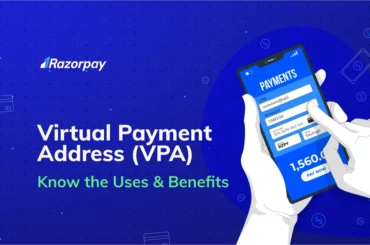Under this new reign of digital payments, UPI interoperability is supposed to bellwether the payment industry, impact stakeholders and reduce complexities.
But things didn’t go as it was supposed to be!
Very few people know about this feature and that’s what this Twitter thread says:
Tweet 1: “Most people do not know that Unified Payments Interface (UPI) is interoperable. Can I GooglePay to you? No. I use PhonePe. And the conversation ends! Are PSPs solving for this or does this perception somehow work in their favour?”
Tweet 2: Hah! And, I was having the same conversation recently. I think the only way to fix this is via an awareness campaign.
Tweet 3: Whaaaaatt!!! Can you do that?
Tweet 4: I always tell people to UPI me the amount. And they are like, what?!
Tweet 5: UPI sounds firangi. BHIM is for the masses.
Towards the end of 2018, the Reserve Bank of India (RBI) issued final guidelines to allow interoperability for prepaid payment instruments for mobile wallets. The RBI declared that all forms of wallet interoperability would fall under UPI and cards through the interoperable card networks.
To safeguard the security of such transactions, Prepaid Payment Instrument (PPI) issuers will adhere to all security guidelines laid out by the National Payments Corporation of India (NPCI), as requested by RBI. That being said, the interoperability option will only be available for full KYC wallets.
The circular issued by NPCI: Guidelines on Interoperability features for all BHIM UPI Apps
Related Read: What Is The UPI Reference Number?
How can customers make UPI payments across apps
For instance, if you are a GooglePay user and you want to transfer funds to a Paytm wallet here’s a step by step process:
Important: Before you proceed please enable location on your mobile. This helps Google detect and flag suspicious activities.
Step 1: Note your UPI ID, which is mentioned on the home screen. (xyz@okaxisbank)
Step 2: Open the Paytm app and select ‘Add Money’
Step 3: Enter the desired amount
Step 4: Select BHIM UPI as the payment method in the payment window
Step 5: In the VPA field, enter your GooglePay UPI ID
Step 6: Click on ‘Pay Now’
Step 7: After you select the option you’ll receive a notification from GooglePay app
Step 8: Select the request from Paytm and click to proceed
Step 9: Select or proceed with you default bank
Step 10: Type your UPI Pin and proceed
After that, the amount will be added to your wallet.
Related Read: How To Make UPI Payment Without Internet?
Guidelines for interoperability
- KYC compliant accounts can only avail the interoperability feature
- PPIs will undertake other forms of KYC as Aadhar authentication is no longer valid for private parties
- If the PPI is a digital wallet, the transfer will be facilitated through UPI
- In the case of cards, they have to connect to their authorised card networks, which includes meal and gift cards, too
- Wallet companies will have to comply with the requirements of UPI and card networks
- Reconciliation will happen based on requirements prescribed by card networks or UPI
- If cards opt for interoperability, they need to have EMV Chip and pin compliant
- For settlement, a non-bank wallet company will have to participate through a sponsor bank, and comply with the bank’s norms and its arrangement with UPI
- The user will complete authentication of the transaction as per her existing wallet credentials
Who needs to follow it?
The BHIM UPI App developed by NPCI, banking apps developed by any bank particularly for UPI transactions falls under the purview of this circular.
Merchant or third party apps covers three categories:
- P2P apps built on top of SDKs provided by either banks or NPCI like PhonePe, Paytm, Google Pay etc.
- Payment service providers who allow generation of VPA IDs via their SDKs. The relevant mobile SDK provided by Razorpay will also comply with these guidelines
- Apps such as Ola or Uber, which provides you with an option to onboard or register a customer on BHIM UPI
What does this mean for the industry?
This NPCI circular will bring the much-needed parity in terms of essential features that need to be built. This has been a long-standing discussion in the industry, and hopefully, the concerns will be solved by the circulars.
The move to make BharatQR mandatory is a significant step to increase the user base. Anyone with a smartphone can now easily use a universal QR code, i.e. BharatQR for collecting payments via any and every UPI app.
And, with the scheme getting a Government push, one can see a net positive effect on the ecosystem and a significant impact on mobile wallets that have thrived on this market for a while.
The interoperability between UPI and cards offered by BharatQR is one of the significant wins. Rather than different organizations trying to encourage digital payments in the physical world in silos, all major card networks, including Visa and Mastercard, now promote one solution.
Finally, these features also give customer experience a considerable boost. Customers will have a bare minimum set of features provided by all apps, and so users will have realistic expectations while shifting over. Also, features like intent will allow for a seamless experience of transacting via UPI on mobile phones and improve performance.
Conclusion
In this article, we did a recap of the lesser-known fact, which is transfering money between mobile wallets using UPI. And, this is not the end, we will continue to educate and spread awareness about UPI to the masses. Do watch this space for more.
Also read: 7 Reasons Why Razorpay is Right for You



